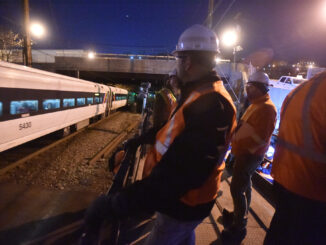
(The Center Square) – Leaders at the Metropolitan Transportation Authority (MTA) say they need $12 billion in federal dollars, or they may be forced to take “draconian service reductions.”
“That money is desperately needed,” MTA Chairman and CEO Patrick J. Foye said in an interview with NY1 Mornings on 1. “If we don’t receive it, our hand may be forced in terms of draconian service reductions, up to 40% on subways and buses, up to 50% on the commuter rails, on top of … having to lay off … thousands of our colleagues, plus toll and fare increases above those that are budgeted.”
The MTA’s board could consider the “apocalyptic scenario,” as Foye termed it when it votes on a budget at its December meeting. The changes could take effect in the first quarter of 2021.
A new report from NYU Rudin Center for Transportation and Appleseed, a New York City-based consulting firm, found the proposed reduction in operations could result in a loss of 13,380 jobs in the 12-county region the MTA serves and a reduction of the region’s gross domestic product by up to $65 billion.
“Proposed cutbacks in MTA spending and service will undermine the capacity of New York City and the surrounding region to recover from the economic effects of the pandemic,” Mitchell L. Moss, director of the NYU Rudin Center for Transportation, said in a statement. “Simply put, without reliable and safe subway, bus and commuter rail services, the future of the city and region is in doubt. Students will not be able to. get to school, essential workers to their jobs, and offices will remain empty.”
Additionally, the report found that without the federal funding, the agency would also have to cancel or defer several projects, including the second phase of the Second Avenue Subway, accessibility improvements to 70 subway stations and the start of work on Metro North’s Penn Station Access project.
“While the MTA should continue to explore opportunities to reduce its costs and find new sources of revenue, neither of these options can in the near term provide sufficient relief to avert severe reductions in MTA investments and services,” the report said. “Substantial federal financial assistance now appears to be the only feasible alternative.”
The report concludes that the MTA could turn to the state or the city for financial help, but both are grappling with their own budget problems. “At this point, we see no realistic near-term alternative to federal financial assistance,” according to the report.
“This is obviously the worst financial crisis that the MTA has faced, and we’re hoping that after the election reason will prevail, and there’ll be a COVID, another COVID, stimulus bill passed,” Foye told NY1. “We’ve been advocating and fighting hard to make the MTA’s case and we’re going to continue to do that.”




